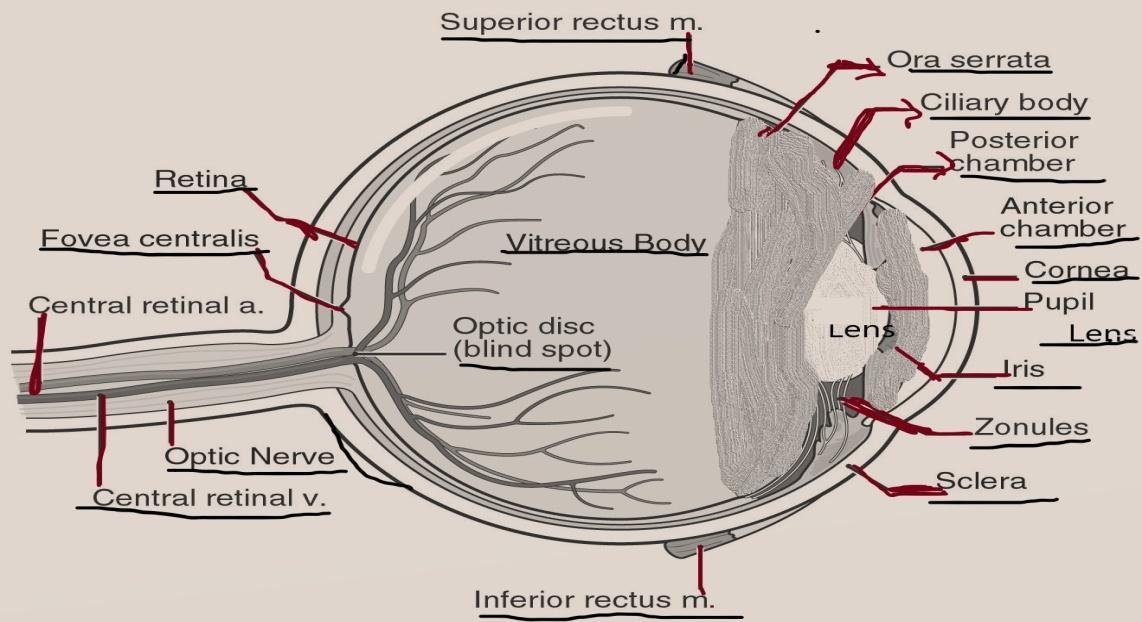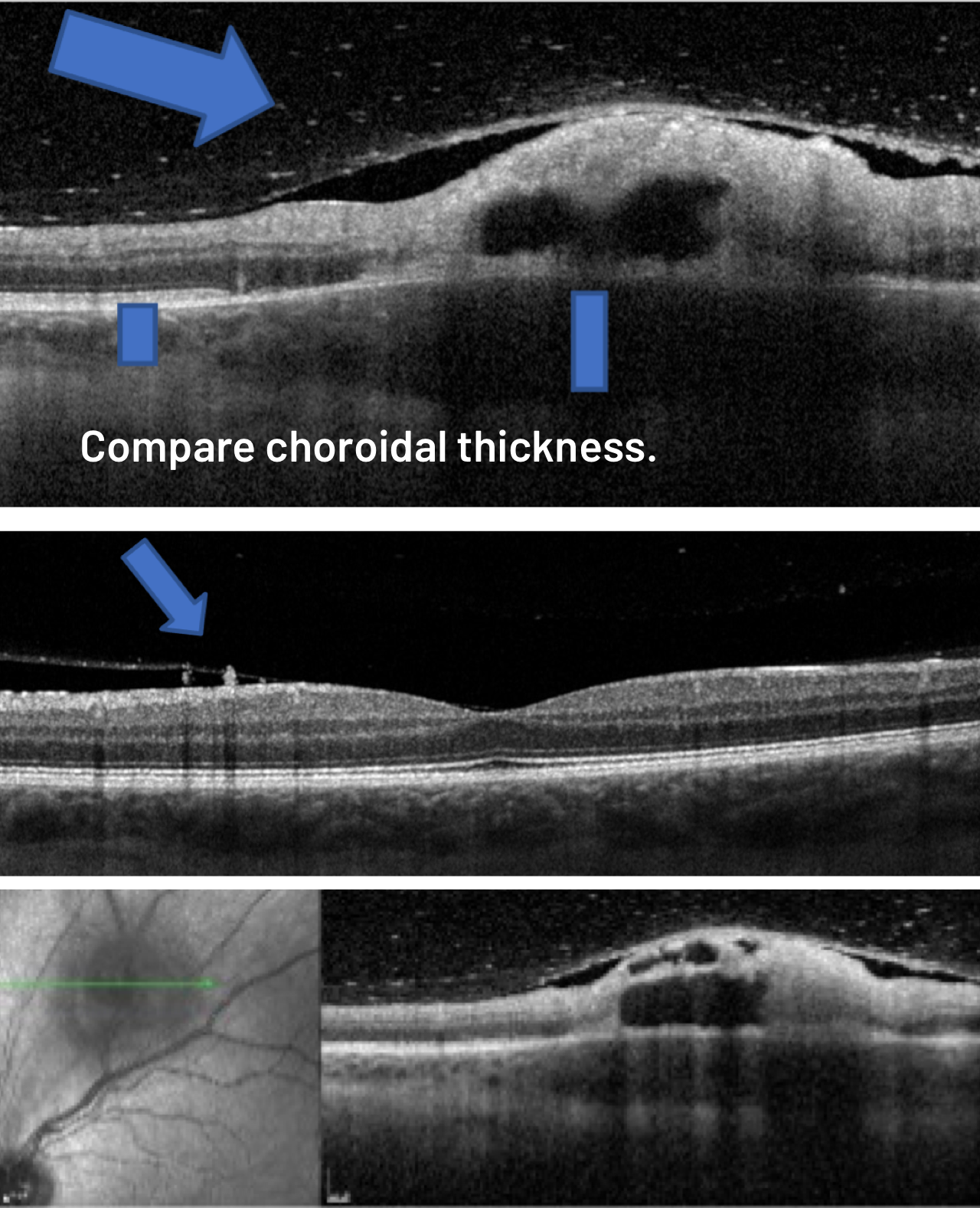The aqueous chamber revealed

The aqueous humor, a transparent and nutrient-rich fluid, plays a crucial role in maintaining the health and function of the eye's anterior segment. It fills the anterior chamber, which is a small, fluid-filled space located between the cornea and the iris. The intricate process of aqueous humor production, circulation, and drainage is essential for the eye's physiological functions. This article delves into the intricacies of the aqueous chamber, exploring its role, the dynamics of aqueous humor, and the implications for ocular health and disease.
Unveiling the Aqueous Chamber: A Window to Ocular Health

The aqueous chamber, often referred to as the anterior chamber, is a vital component of the eye’s anatomy. It is a fluid-filled space that provides nourishment and maintains the shape of the eye’s front segment. The aqueous humor, which fills this chamber, is continuously produced, circulated, and drained, creating a dynamic environment essential for ocular health.
The primary function of the aqueous humor is to provide nutrients and oxygen to the avascular structures of the eye, including the cornea and the lens. Additionally, it maintains intraocular pressure (IOP), ensuring the eye's integrity and proper functioning. The delicate balance of aqueous humor production and drainage is crucial, as an imbalance can lead to various ocular disorders, most notably glaucoma.
The Dynamics of Aqueous Humor Production and Drainage
Aqueous humor is produced by the ciliary body, a structure located behind the iris. The ciliary body’s ciliary processes secrete the fluid, which then flows through the pupil into the anterior chamber. This continuous production ensures a steady supply of nutrients and maintains the eye’s internal pressure.
The drainage of aqueous humor occurs primarily through two pathways: the trabecular meshwork and the uveoscleral pathway. The trabecular meshwork is a complex network of tissue located at the angle between the cornea and the iris. It acts as a filter, allowing the aqueous humor to pass through and drain into Schlemm's canal, which then leads to the venous system. The uveoscleral pathway, on the other hand, allows a small portion of the aqueous humor to drain directly into the tissues surrounding the eye.
| Aqueous Humor Dynamics | Description |
|---|---|
| Production Rate | Approximately 2.5 microliters per minute, equivalent to about 1.5 milliliters per hour. |
| Drainage Pathways | Trabecular Meshwork (major) and Uveoscleral Pathway (minor) |
| Intraocular Pressure Regulation | The balance between production and drainage maintains IOP, which is crucial for eye health. |

Implications for Ocular Health and Disease
The aqueous chamber and its dynamics are central to understanding various ocular conditions. An imbalance in aqueous humor production or drainage can lead to increased intraocular pressure, a hallmark of glaucoma. Glaucoma is a group of eye diseases characterized by damage to the optic nerve, often due to elevated IOP. It is a leading cause of irreversible blindness worldwide.
Additionally, abnormalities in the aqueous chamber can be indicative of other eye diseases. For instance, inflammation or uveitis can cause changes in the composition and flow of aqueous humor, leading to symptoms like redness, pain, and blurred vision. Furthermore, the aqueous humor is often analyzed for diagnostic purposes, as it can reflect systemic health conditions or provide insights into the presence of certain pathogens.
In recent years, advancements in ophthalmic technology have allowed for a more detailed understanding of the aqueous chamber and its role in ocular health. Imaging techniques such as anterior segment optical coherence tomography (AS-OCT) provide high-resolution images of the anterior chamber, aiding in the diagnosis and management of various conditions.
Technological Advancements: Enhancing Our Understanding

The field of ophthalmology has witnessed remarkable technological advancements, particularly in imaging and diagnostic tools. These innovations have revolutionized the way eye diseases are diagnosed and managed, including those related to the aqueous chamber.
Anterior Segment Optical Coherence Tomography (AS-OCT)
AS-OCT is a non-invasive imaging technique that utilizes light waves to capture high-resolution cross-sectional images of the anterior segment of the eye. This technology provides detailed images of the aqueous chamber, allowing ophthalmologists to visualize structures such as the cornea, iris, lens, and ciliary body with exceptional clarity.
AS-OCT has proven invaluable in the management of glaucoma, as it enables precise measurement of the anterior chamber angle, which is crucial for understanding the drainage dynamics of aqueous humor. By analyzing the angle, ophthalmologists can determine the risk of glaucoma and tailor treatment strategies accordingly.
Moreover, AS-OCT can detect subtle changes in the anterior chamber, such as those caused by inflammation or injury. This early detection can lead to timely intervention, potentially preventing further damage and preserving vision.
Advanced Imaging for Aqueous Humor Analysis
Beyond structural imaging, advanced techniques are now employed to analyze the composition and flow of aqueous humor. For instance, laser Doppler flowmetry can measure the velocity and direction of fluid flow within the aqueous chamber. This information is crucial in understanding the dynamics of aqueous humor drainage and can aid in the diagnosis and management of glaucoma.
Additionally, the aqueous humor itself can be analyzed for various biomarkers. This liquid biopsy approach has shown promise in the early detection of eye diseases and even systemic conditions. For example, elevated levels of specific proteins in the aqueous humor can indicate the presence of retinal diseases or even neurological disorders.
| Advanced Imaging Techniques | Description |
|---|---|
| Anterior Segment Optical Coherence Tomography (AS-OCT) | Provides high-resolution images of the anterior segment, aiding in the diagnosis and management of conditions affecting the aqueous chamber. |
| Laser Doppler Flowmetry | Measures fluid flow within the aqueous chamber, offering insights into drainage dynamics and aiding in glaucoma diagnosis. |
| Liquid Biopsy | Analysis of aqueous humor for biomarkers provides early detection of eye diseases and potential insights into systemic conditions. |
Future Implications and Research Directions
The aqueous chamber and its associated dynamics continue to be a focus of intense research and development. Several key areas are being explored to further enhance our understanding and improve patient outcomes.
Glaucoma Research and Precision Medicine
Glaucoma, a complex and progressive eye disease, remains a major focus of research. Scientists are working towards a better understanding of the genetic and environmental factors that contribute to the disease. This knowledge can lead to more precise diagnostic tools and tailored treatment strategies, potentially slowing down or even preventing the progression of glaucoma.
Additionally, the development of precision medicine approaches is gaining traction. By analyzing an individual's genetic makeup and specific disease markers, such as those found in the aqueous humor, personalized treatment plans can be devised. This approach holds the promise of more effective and targeted therapies, improving the quality of life for glaucoma patients.
Exploring New Treatment Modalities
Researchers are continually exploring novel treatment modalities for ocular diseases associated with the aqueous chamber. One promising area is the development of gene therapies. These therapies aim to modify or replace defective genes that contribute to diseases like glaucoma or retinal disorders. While still in the early stages, gene therapy holds the potential to offer long-term solutions for patients suffering from these conditions.
Another emerging treatment modality is the use of stem cells. Stem cell-based therapies have shown promise in repairing damaged ocular structures and potentially restoring vision. These therapies are being explored for a range of conditions, including those affecting the aqueous chamber and its associated structures.
Enhancing Diagnostic Capabilities
Advancements in diagnostic technologies are also a key area of focus. Researchers are working on developing more sensitive and specific tests to detect early signs of ocular diseases. For instance, the development of point-of-care diagnostics for conditions like glaucoma could allow for earlier intervention and better management.
Furthermore, the integration of artificial intelligence (AI) and machine learning into diagnostic processes is being explored. These technologies can analyze vast amounts of data, including images and biomarker profiles, to aid in the early detection and diagnosis of ocular diseases. This approach has the potential to revolutionize patient care, offering more accurate and timely diagnoses.
What is the function of the aqueous humor in the eye?
+The aqueous humor serves several critical functions in the eye. It provides nutrients and oxygen to the avascular structures, such as the cornea and lens, ensuring their health and proper functioning. Additionally, it maintains the shape and integrity of the eye by regulating intraocular pressure (IOP). The balance between aqueous humor production and drainage is essential for maintaining optimal eye health.
How does the aqueous chamber relate to glaucoma?
+Glaucoma is a group of eye diseases characterized by damage to the optic nerve, often due to elevated intraocular pressure (IOP). The aqueous chamber and its dynamics play a central role in glaucoma. An imbalance in aqueous humor production or drainage can lead to increased IOP, which is a hallmark of glaucoma. Understanding the dynamics of the aqueous chamber is crucial for diagnosing and managing this sight-threatening condition.
What are the advancements in imaging the aqueous chamber?
+Advancements in imaging technology have revolutionized the way the aqueous chamber is visualized and analyzed. Anterior Segment Optical Coherence Tomography (AS-OCT) is a key advancement, providing high-resolution images of the anterior segment, including the aqueous chamber. This technology aids in the diagnosis and management of various eye conditions, particularly those related to the aqueous chamber and its dynamics.



